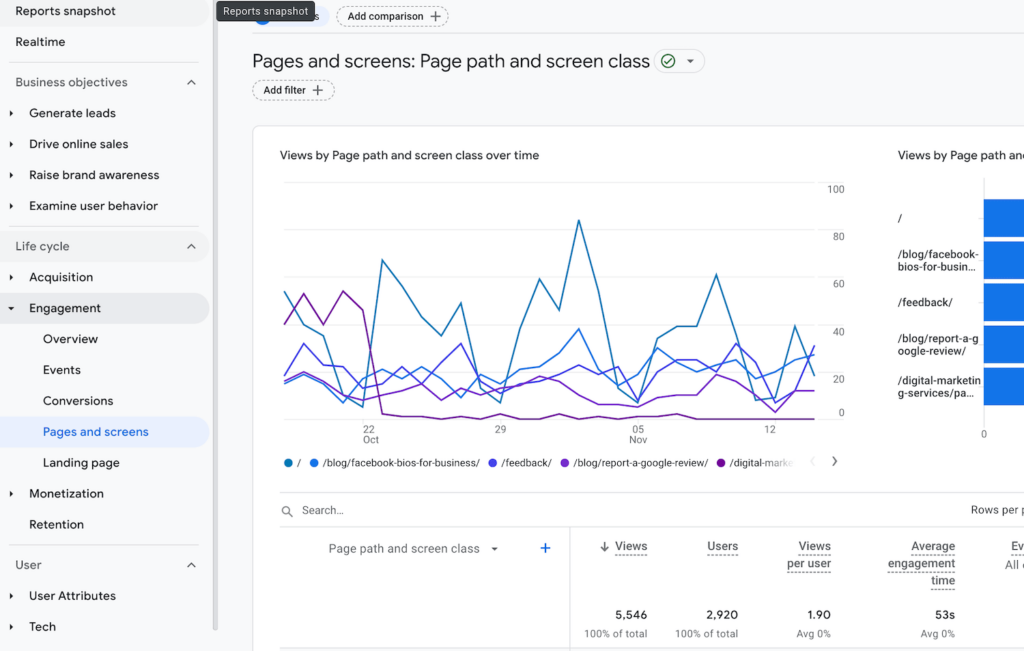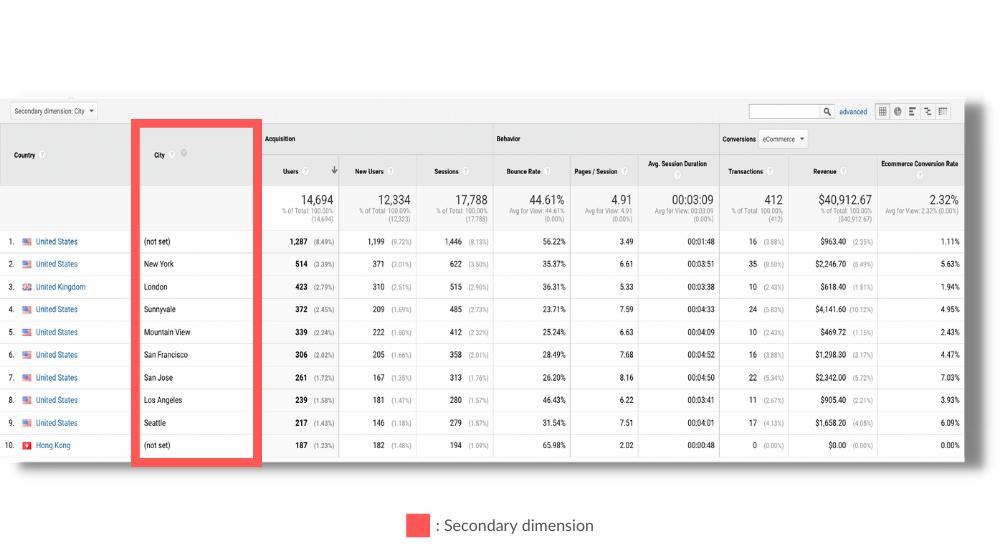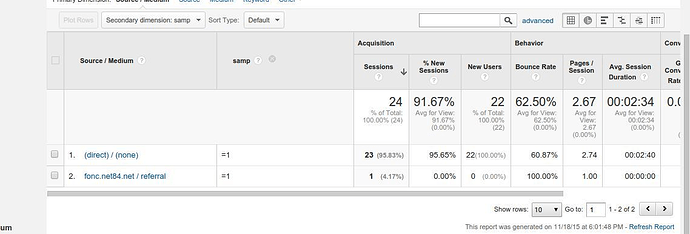Browsing the Midst of Additional Measurement in Google Analytics: An In-depth Expedition on Its Capability
Second dimensions, though seemingly straightforward at very first look, nurture a wealth of untapped possible waiting to be harnessed. As we begin on this trip to discover the nuanced performance of second measurements, we will certainly reveal how this function can illuminate patterns, reveal correlations, and ultimately lead the way for educated decision-making in the electronic landscape (what is a “secondary dimension” in google analytics?).
Understanding Second Dimensions in Google Analytics

Recognizing just how additional dimensions job is vital for leveraging the complete power of Google Analytics. By incorporating main metrics with additional dimensions, you can acquire important understandings that drive informed decision-making and optimization methods.
Leveraging Second Dimensions for Information Analysis
Structure upon the foundational understanding of exactly how additional dimensions boost information analysis in Google Analytics, the utilization of these added layers of information becomes paramount in removing useful insights for informed decision-making and optimization techniques. By leveraging second dimensions, analysts can delve deeper into the performance metrics by including more context to the key measurements, thus uncovering hidden patterns and relationships that could not appear in the beginning glance. This deeper level of analysis makes it possible for organizations to much better comprehend user actions, identify trends, and identify locations for renovation.
Additionally, secondary dimensions offer a more detailed view of the information, enabling for segmentation based upon various parameters such as demographics, devices, web traffic resources, and a lot more. This division promotes a more granular evaluation, making it possible for businesses to tailor their campaigns and approaches to certain audience sectors for boosted targeting and customization. Essentially, the tactical use additional dimensions encourages organizations to make data-driven choices that drive development and success in the electronic landscape.
Advanced Methods for Additional Measurement Application
Exploring detailed techniques to harness the complete potential of secondary measurements in Google Analytics raises the deepness and class of data analysis for critical decision-making. One innovative method for executing secondary measurements is using customized measurements. By specifying custom-made dimensions, individuals can section information additionally to gain more details insights into individual habits, such as tracking interactions with particular aspects on a website or keeping track of the efficiency of a specific advertising campaign. One more innovative strategy is the usage of regex (normal expressions) within secondary measurements. Regex allows for even more versatile and effective pattern matching, making it possible for users to develop intricate filters for information evaluation. Furthermore, integrating secondary dimensions with innovative sections can supply also a lot more granular understandings by using several layers of division to the data. This approach permits a deeper understanding of user behavior based on numerous requirements simultaneously. Implementing these innovative techniques for secondary measurements in Google Analytics encourages individuals to conduct more sophisticated evaluation and make data-driven decisions with accuracy.
Interpreting Insights Via Additional Measurements

When interpreting insights with secondary dimensions, it is vital to take into consideration the context of the information and exactly how different measurements communicate with each other. For instance, understanding which particular web traffic sources bring about greater conversion rates or recognizing which gadgets customers like for making acquisitions can provide workable understandings for enhancing advertising campaigns and boosting total website efficiency. By very carefully taking a look at the data with secondary dimensions in mind, companies can make informed decisions that drive significant results and improve their electronic visibility.
Optimizing Efficiency With Secondary Dimensions

One vital means to enhance performance with second measurements is by segmenting information much more granularly. This allows you to separate details factors that may be influencing your metrics and acquire a much better understanding of what drives success or failure in your electronic campaigns. By combining second measurements such as 'gadget group' and 'landing page,' you can pinpoint which tool kinds are most effective for particular landing pages, enabling you to customize your techniques appropriately.
Moreover, utilizing additional measurements can help you determine patterns, patterns, and correlations that may not be evident when evaluating data with primary dimensions alone. This much deeper level of analysis can cause more informed decision-making and ultimately boost the total efficiency of your site or electronic advertising and marketing projects.
Final Thought
Finally, secondary measurements in Google Analytics play an essential role in boosting information evaluation and offering much deeper understandings right into site efficiency. By making use of advanced techniques and interpreting the data successfully, services can optimize their techniques and enhance total efficiency. Understanding the capability of additional dimensions is essential for why not find out more making informed decisions and driving success in the electronic landscape.
By leveraging secondary measurements, analysts can dig much deeper into the efficiency metrics by adding even more context to the main measurements, hence discovering concealed patterns and relationships that could not be obvious at very first look. One advanced method for applying additional measurements is the use of customized measurements.Having actually mastered sophisticated methods like custom measurements and regex for second dimension implementation in Google Analytics, the following critical action is analyzing the important understandings obtained via these sophisticated data division approaches. Interpreting understandings through secondary measurements entails analyzing the relationships in between the primary and additional dimensions chosen, discovering patterns, trends, and connections that may not be best site instantly obvious when looking at the information in its totality.When translating understandings via secondary measurements, it is important to think about the context of the data and just how different dimensions engage with each various other.